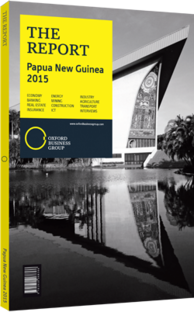New legislation for PNG's sovereign wealth fund to be implemented in mid-2015
Papua New Guinea established a sovereign wealth fund in 2012, and while the original law was delayed and greatly revised, it is set to be implemented by mid-2015, with the first liquefied natural gas (LNG) proceeds flowing into the fund by 2016.
If all goes according to plan, national savings will begin to accumulate and grow offshore. Estimates have placed the total potential value of the sovereign wealth fund at $30bn.
BOUND FOR SANTIAGO: Like most sovereign wealth funds, PNG’s is designed to keep money earned from the extractive industries in dedicated pools of highly stable investments, such as government bonds and triple-A-rated securities held offshore. Many advantages are seen to this arrangement.
Not only will the fund protect assets and create wealth for future generations of Papua New Guineans, but by keeping the money outside the domestic economy it also reduces the dislocation caused by sudden influxes. The inflationary impact of an increase in wealth will be avoided and Papua New Guineans will be insulated from the jarring cycles that tend to lead to the so-called Dutch Disease.
Under the Organic Law on the Sovereign Wealth Fund of 2012, PNG is to establish a foreign currency account overseas to be managed from PNG. Funds in the account are to be spent on infrastructure development and socioeconomic services. A number of guidelines were built into the original law to protect assets and limit the possibility of mismanagement. All spending must go through the national budget and cannot be made directly.
The government itself has been prevented from instructing the fund, as its role is limited to issuing an investment mandate that must be followed by an independent board, which will be overseen by the Treasury. The Treasury will be limited to devising the investment mandate and ensuring the board follows the law. Independent fund managers will be hired and a custodian of the fund will be appointed.
The investment mandate will set out the types of investments that can be made, the risk/return profile of the portfolio and guidelines for ethical investment, liquidity, credit and prohibited investments, and the terms for domestic investments.
The original law received considerable support from within the country and beyond its borders. Some concerns were raised, however. The IMF noted, for example, that careful attention needs to be paid to the operations of the sovereign wealth fund to ensure all withdrawals do in fact pass through the national budget, as required, and that funds are not somehow diverted. However, overall, key observers and participants were satisfied. “I am very comfortable with the new Organic Law because it meets the internationally recommended Santiago Principles of Governance and Management,” Loi Bakani, the governor of the central bank, said in 2013.
A START, THEN DELAYS: After the passing of the first law, the basic elements were put in place. A secretariat was formed, located at the Treasury, and work began on implementation. It was expected at the time that the fund would be in operation by mid-2014, but soon the project stalled, according to David Osborne, a visiting fellow at the Development Policy Centre of Australia National University.
A procedural error in the certification of the law brought its legitimacy into question. To erase doubt and to ensure the law was passed properly, it was to be passed again. But before it was sent for a vote, the text was amended. Some of the changes are said to be simple editing for clarification, others may impact the way funds are deposited and withdrawn.
A copy of the revised law was published in October 2014. It was entitled Proposed Law to Amend the Organic Law on Sovereign Wealth Fund. The new document called for only two funds, a Stabilisation Fund and a Savings Fund. A great number of amendments have been added, and the revision is clearly far more detailed than the originally proposed law.
You have reached the limit of premium articles you can view for free.
Choose from the options below to purchase print or digital editions of our Reports. You can also purchase a website subscription giving you unlimited access to all of our Reports online for 12 months.
If you have already purchased this Report or have a website subscription, please login to continue.

